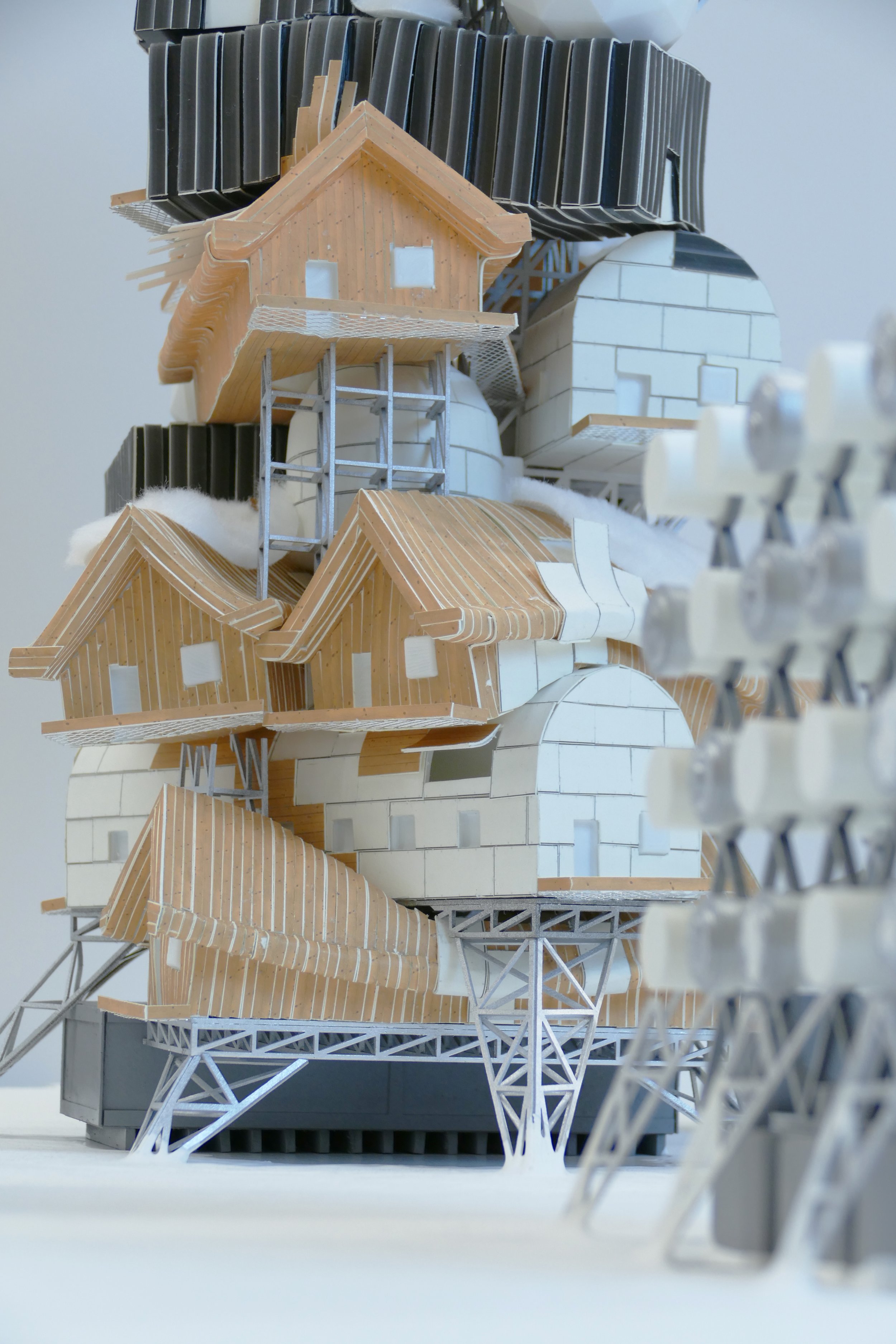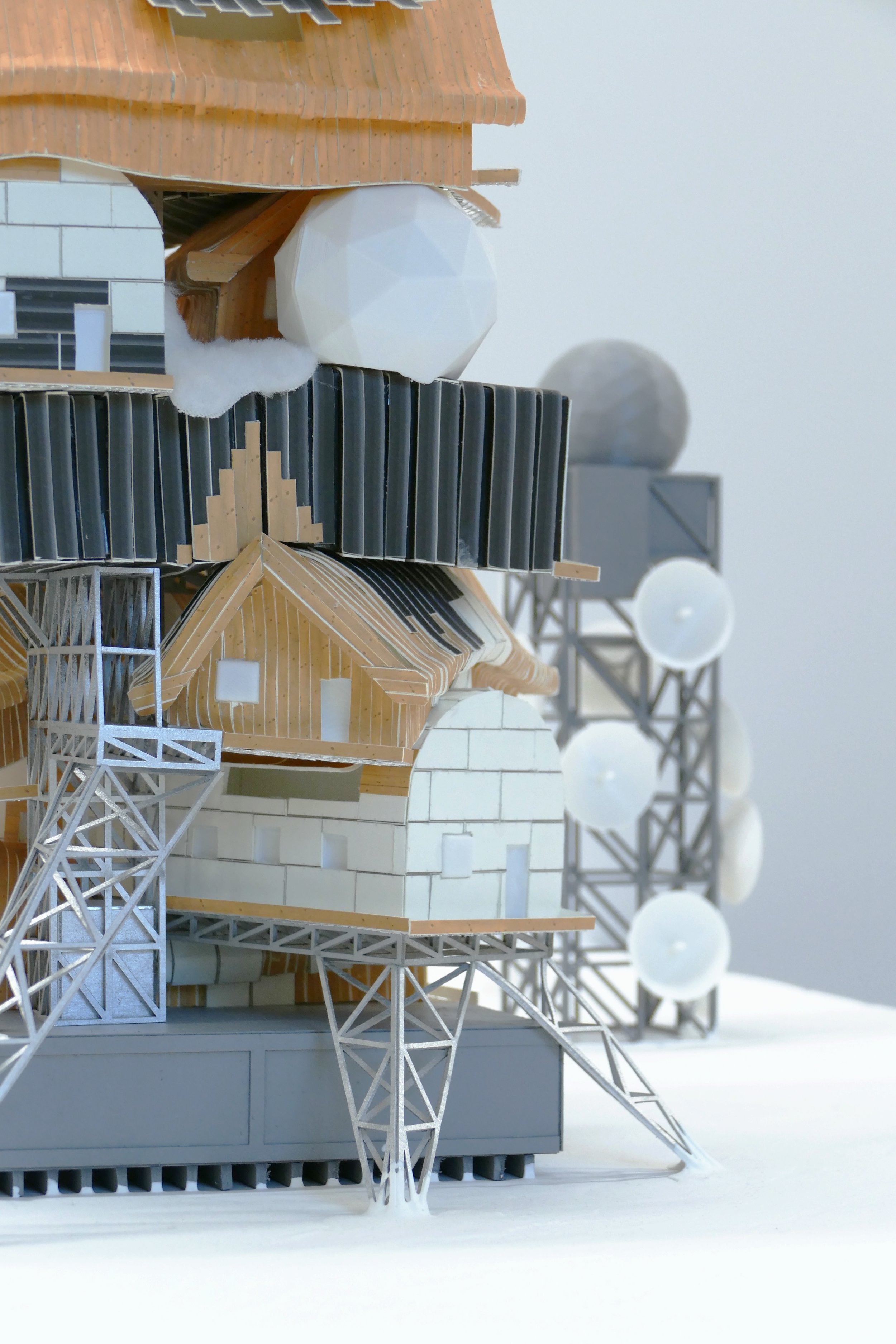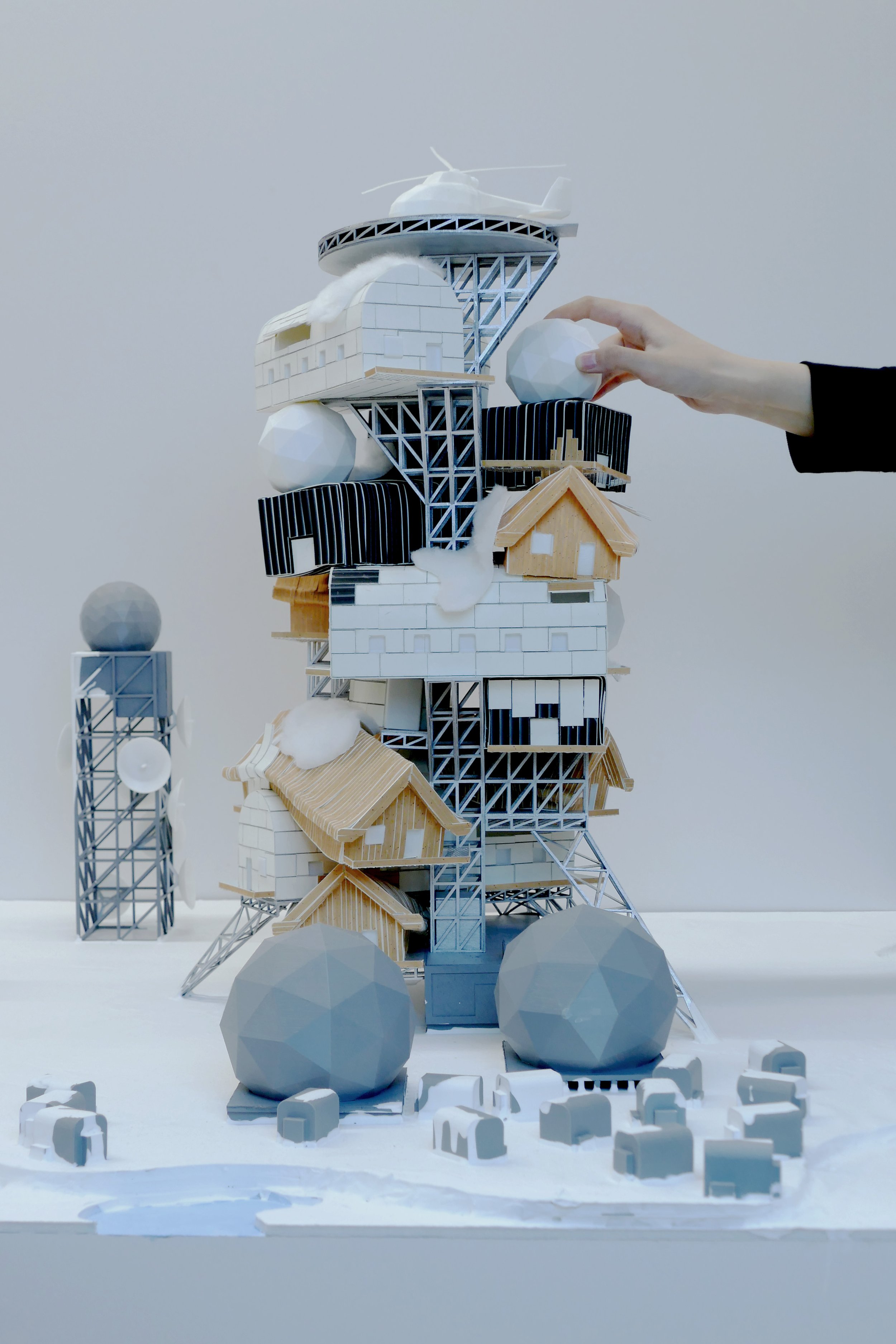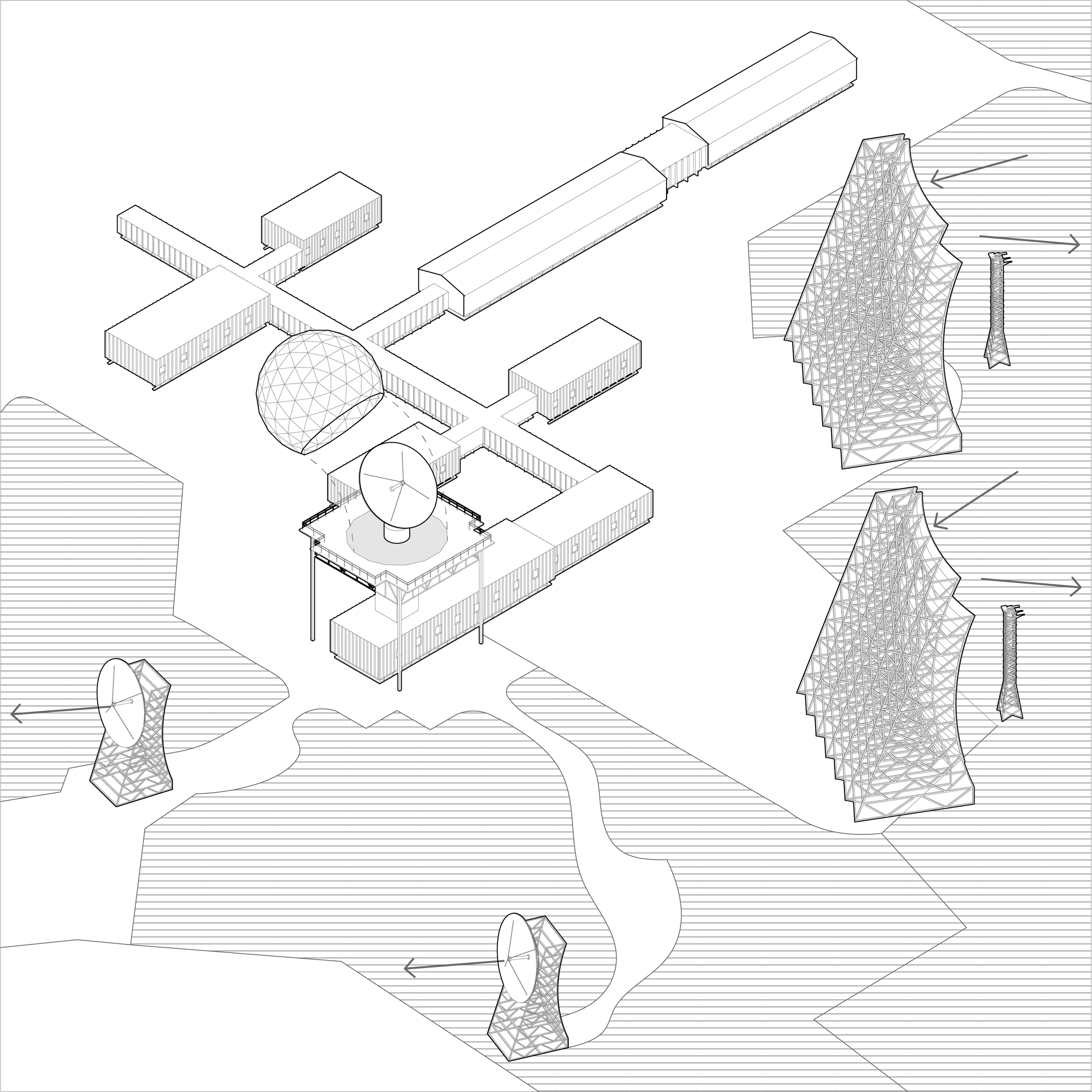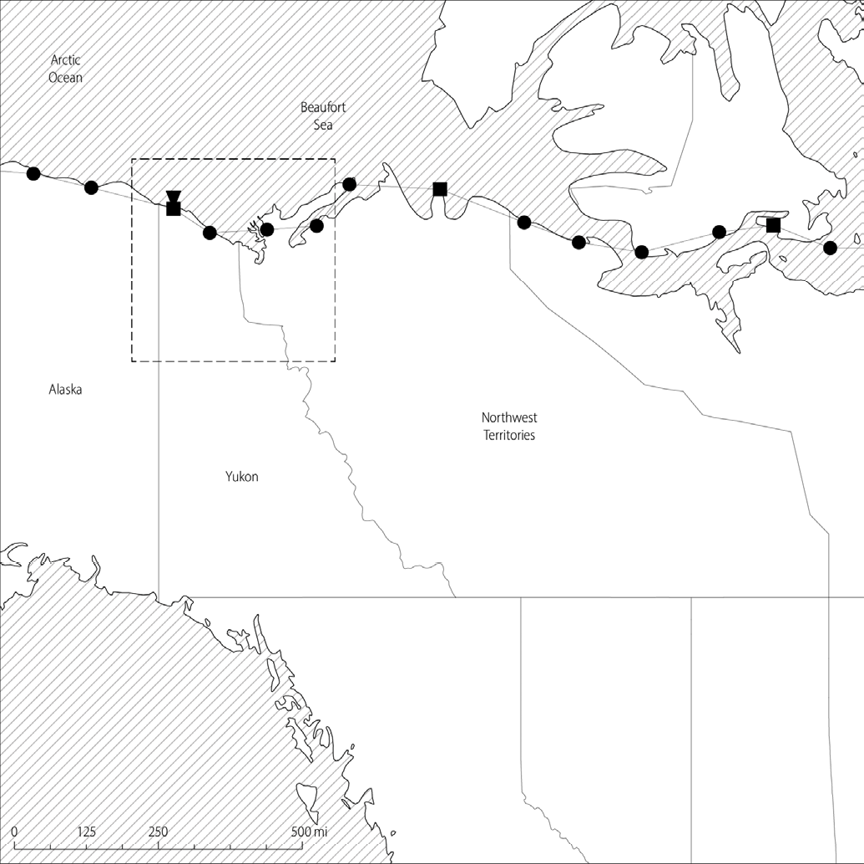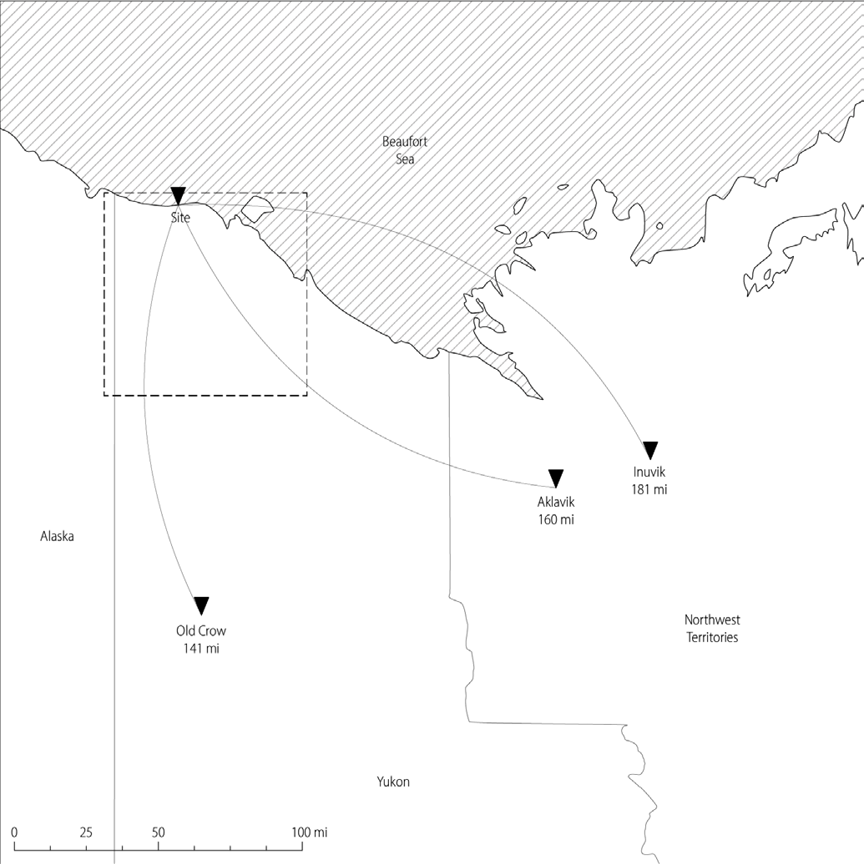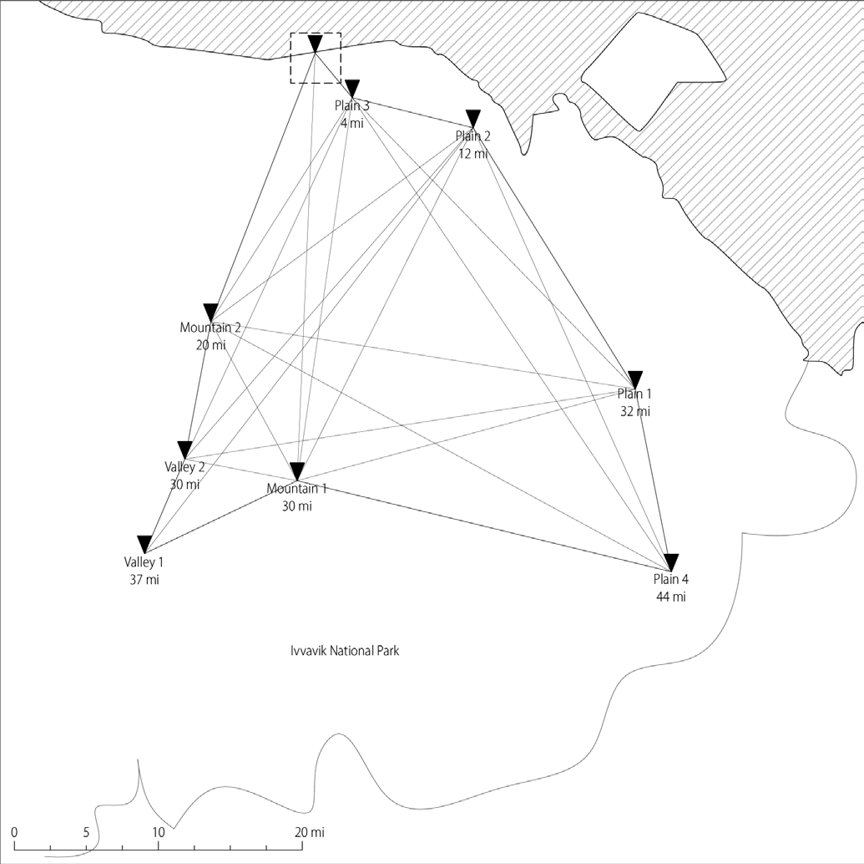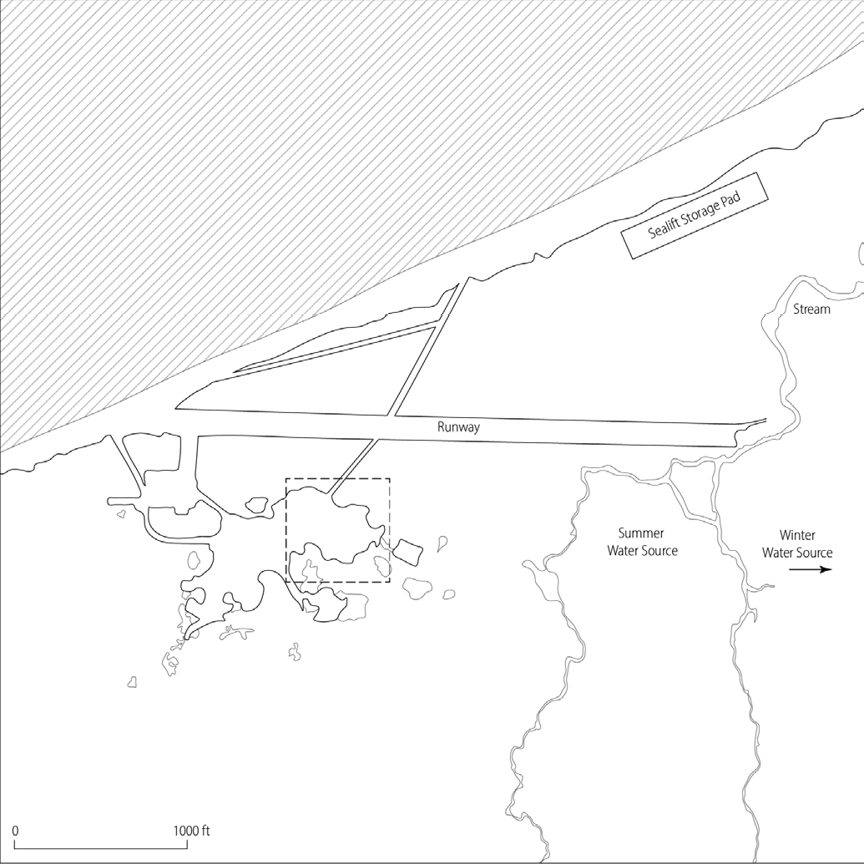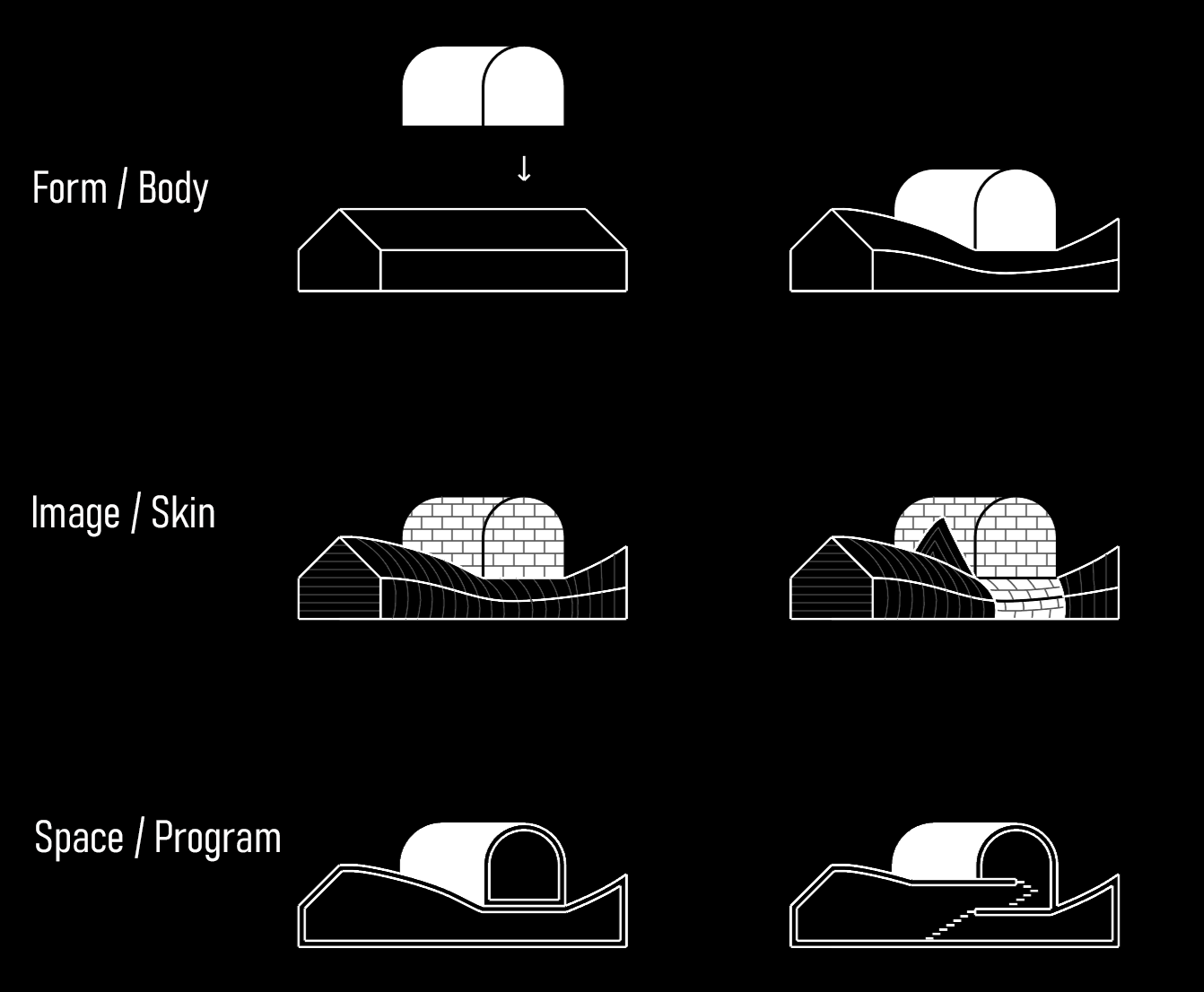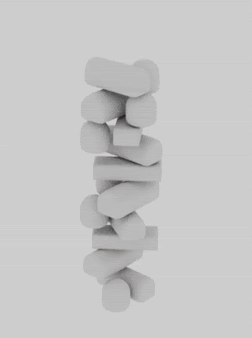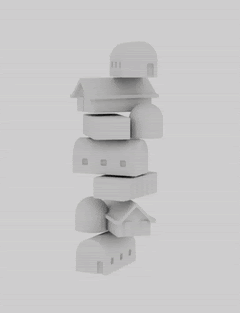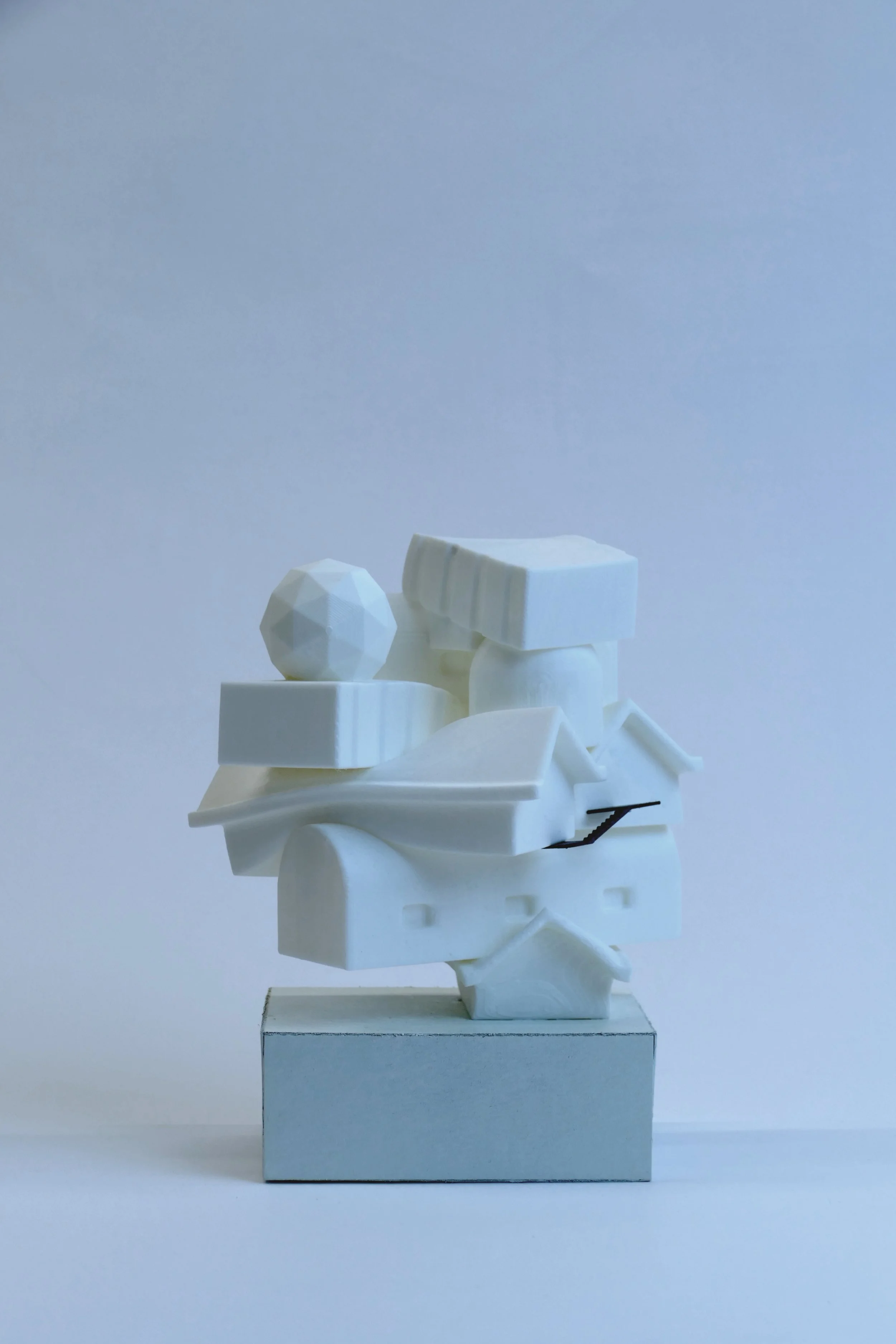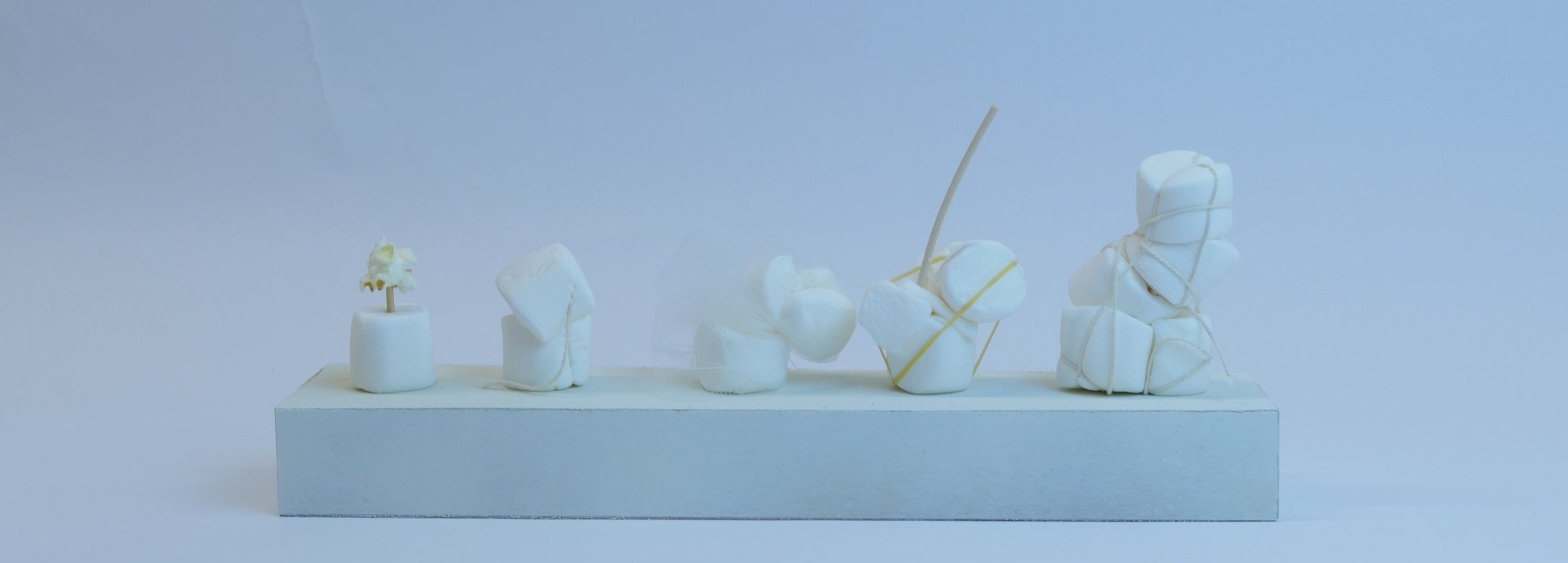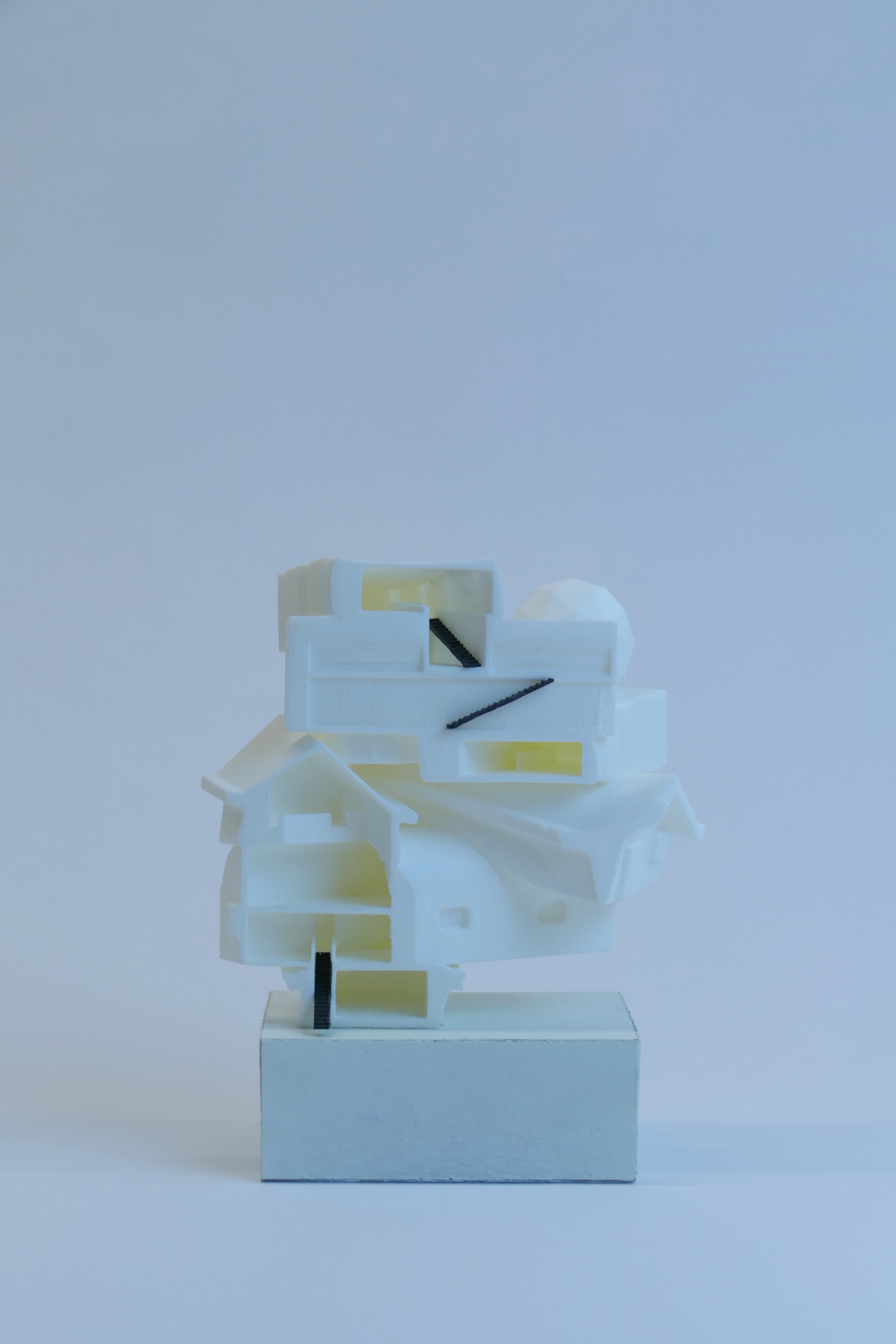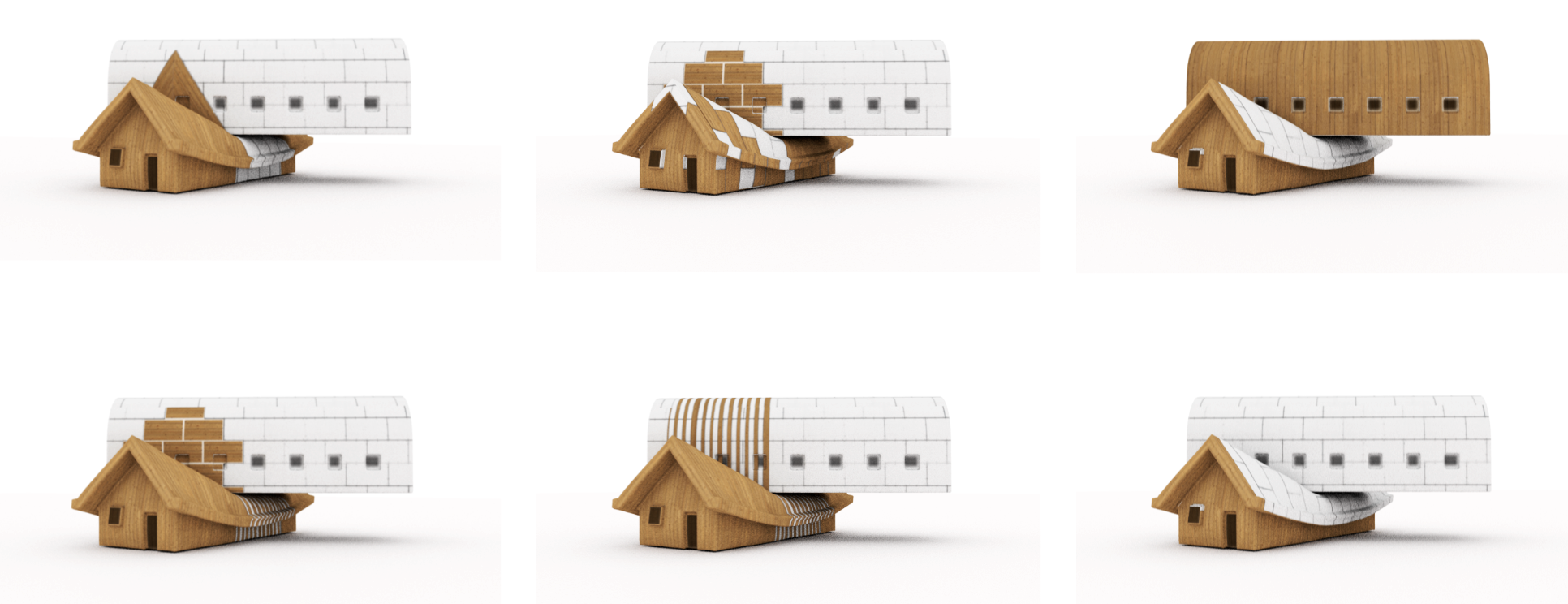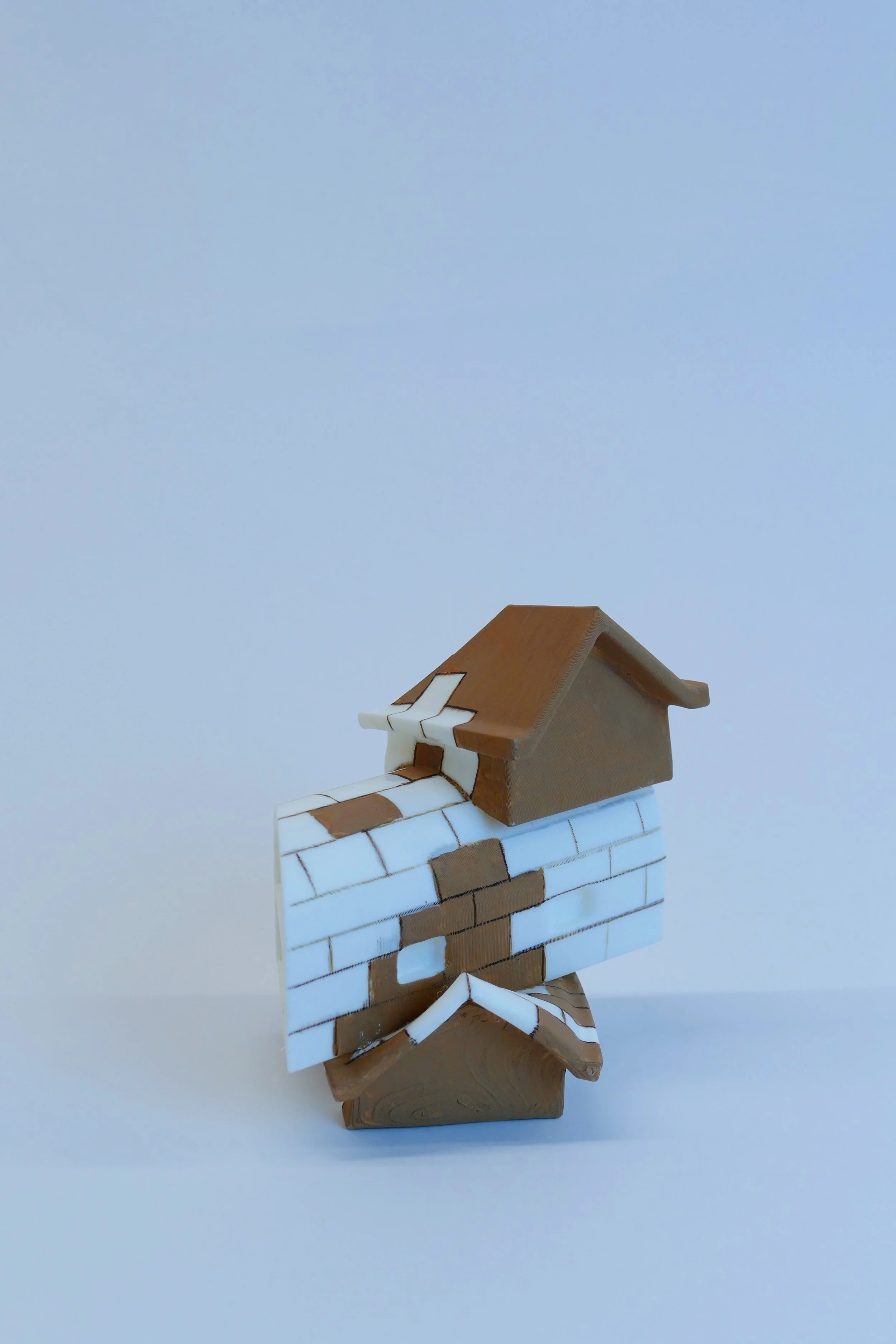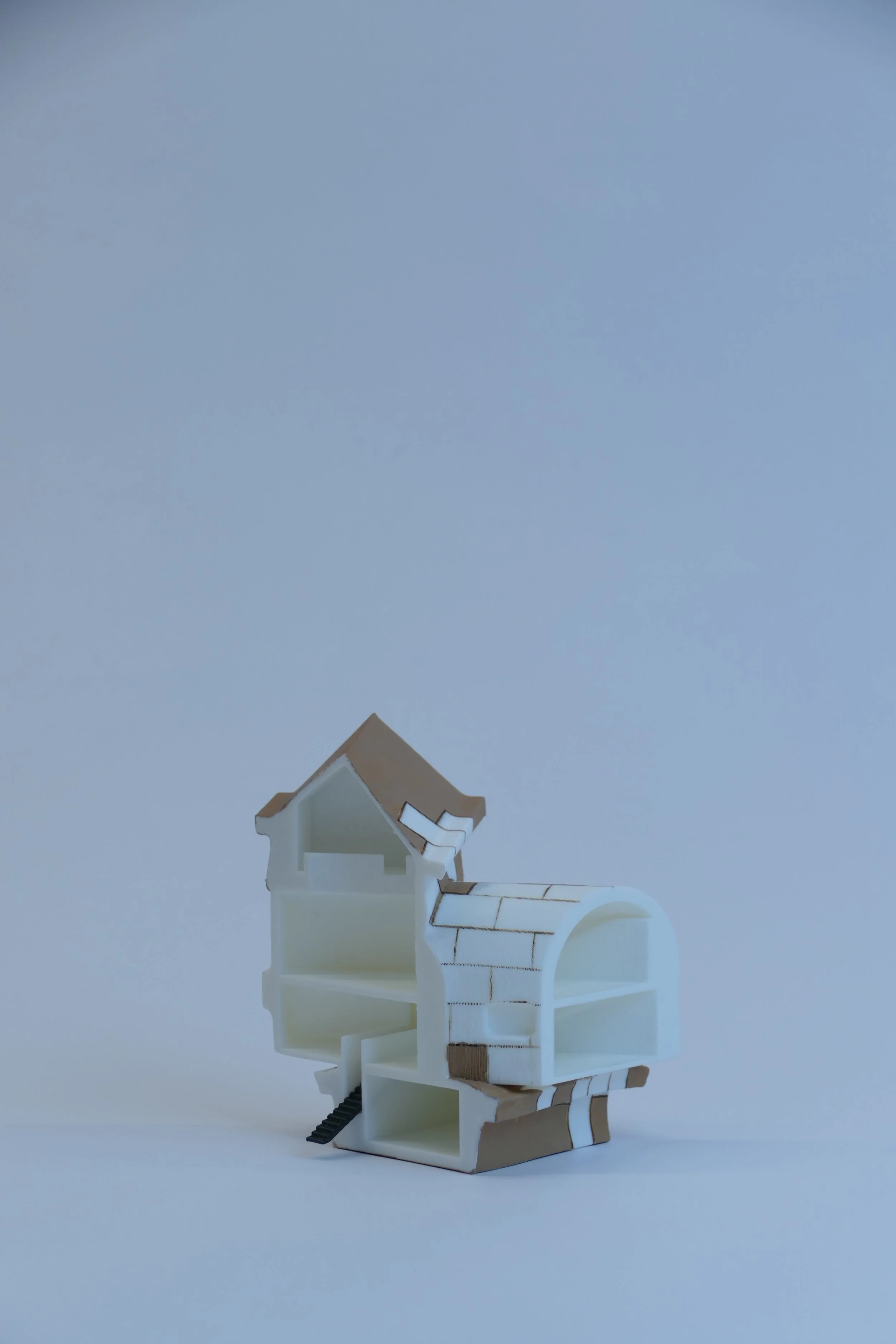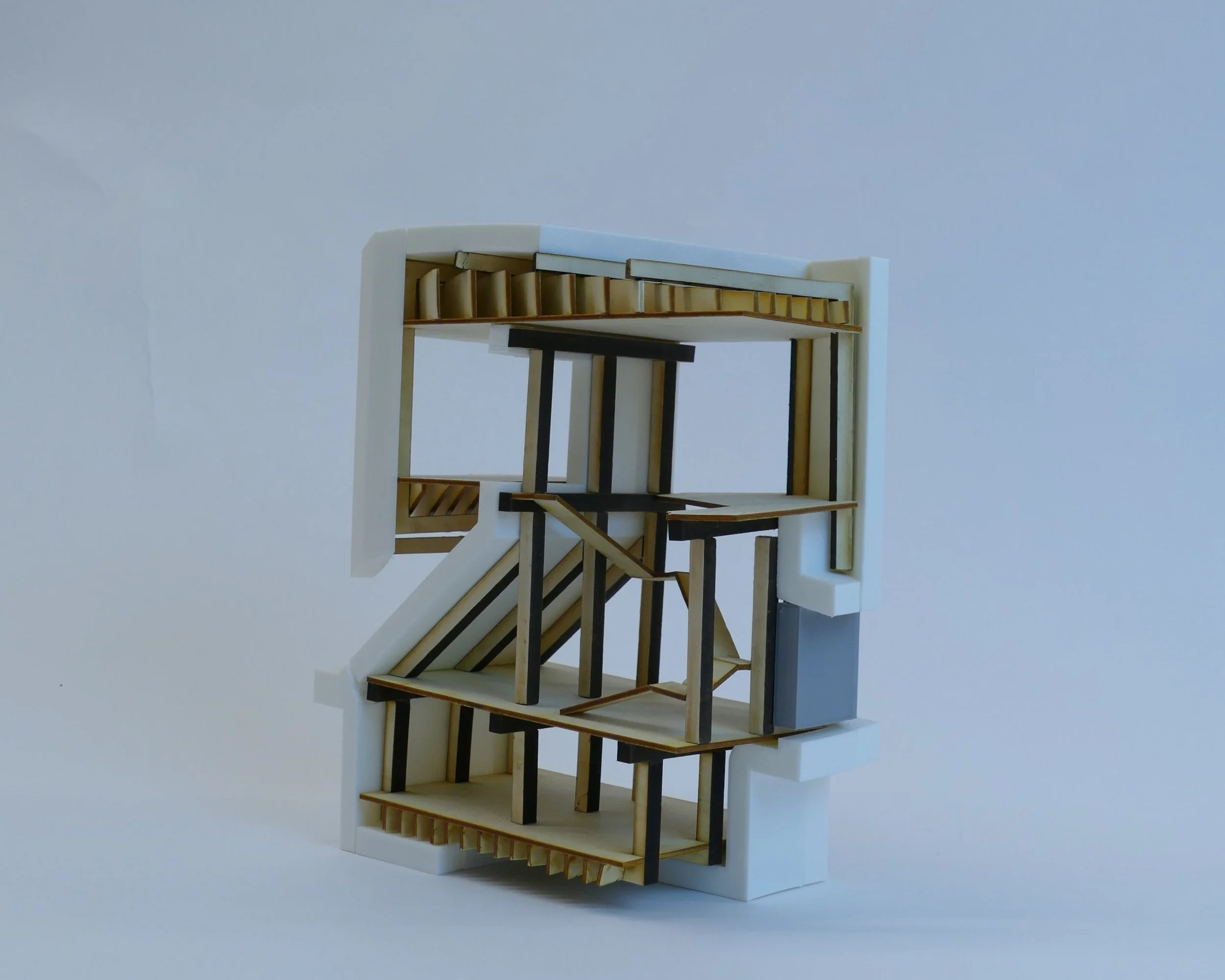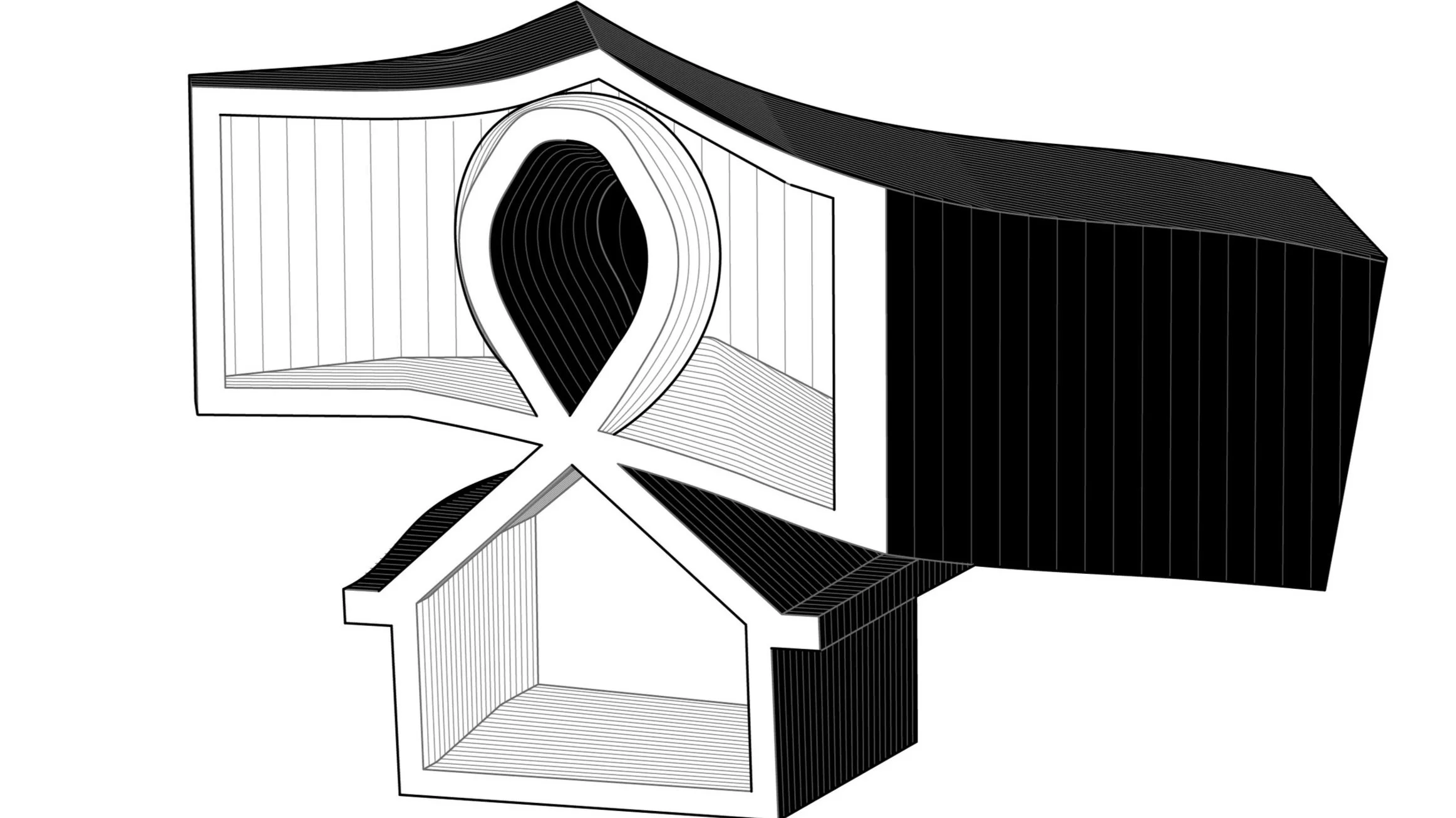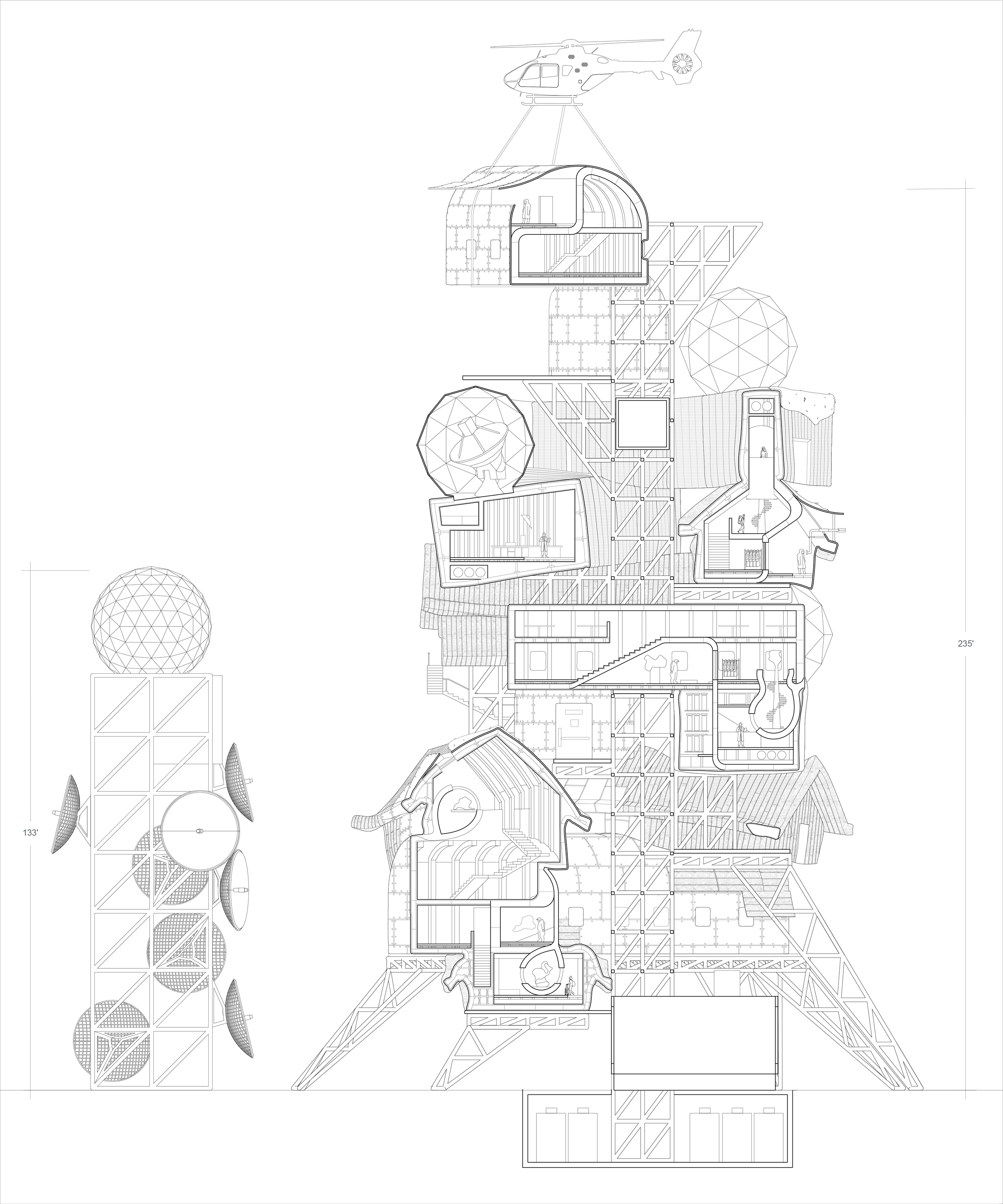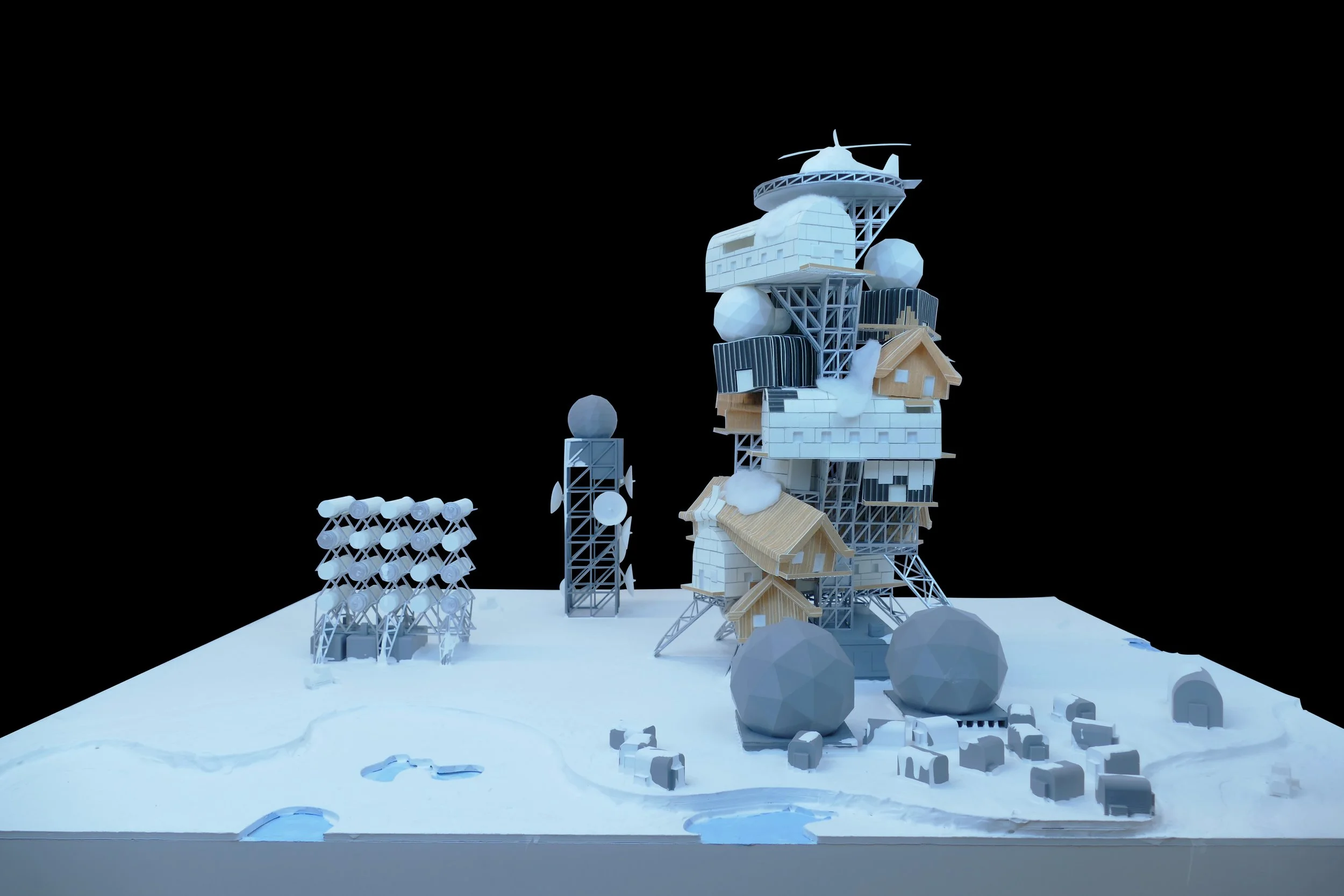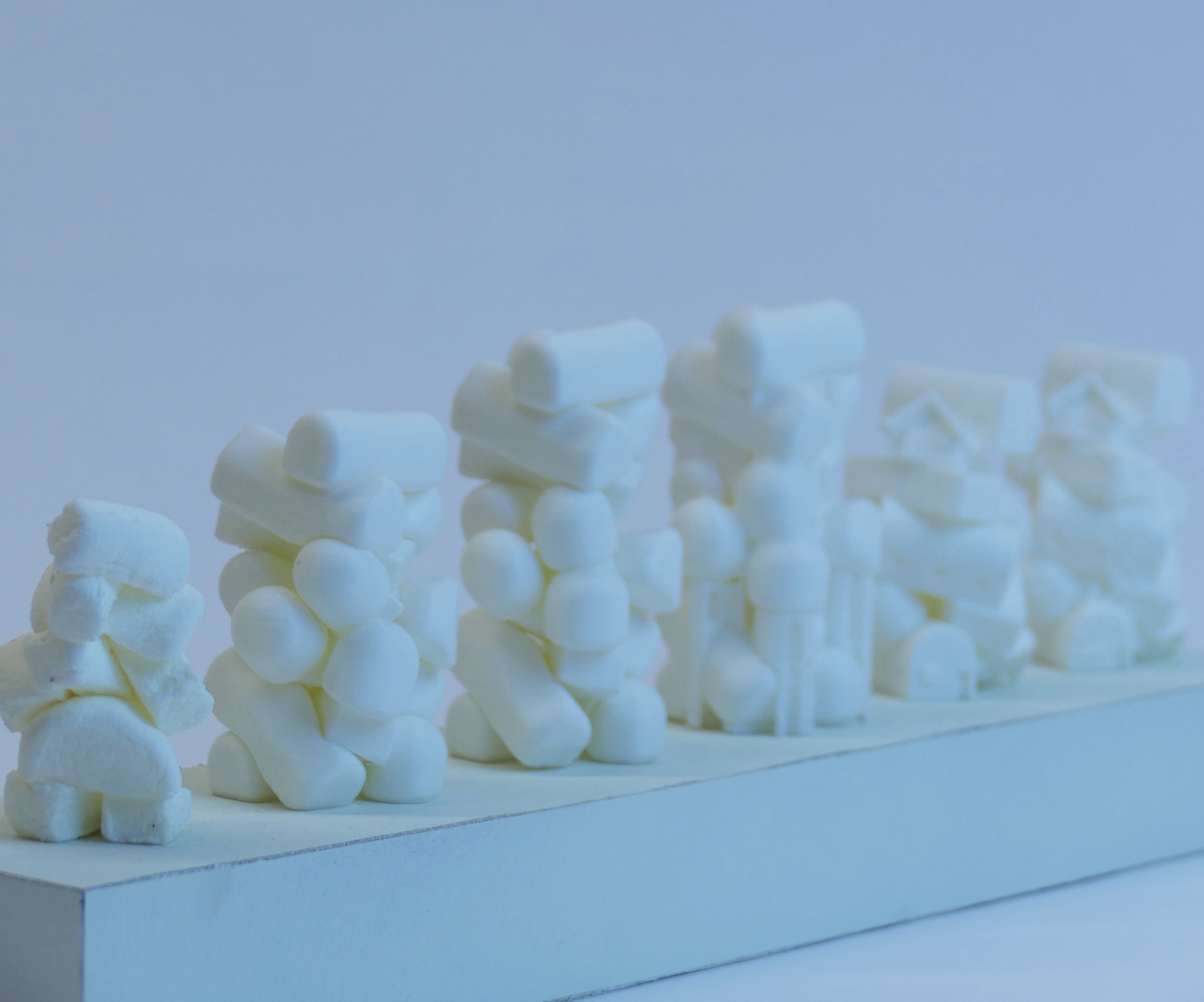
Kin-Bashing
De-Alienizing Sensing Stations in Indigenous Territory
Architectural Thesis Project by Emily Guan and Yafei Li
1. Abstract
-
This summer, deadly flooding hit Beijing in the wake of tropical cyclone Typhoon Doksuri causing the death of over sixty citizens, the destruction of fifty-nine thousand homes, and damage of one-hundred-forty-seven thousand homes. This is just one of the many disasters (such as extreme heat, cold, wind, and humidity) that are increasing in rate around the globe, caused by the weather monster that is quietly growing – fed by the unsustainable movement done by humans.
Accepting the reality of a future where the climate will become more extreme, we want to explore ways in which we can prepare ourselves for the growing monstrosity that is climate change. Our project anticipates the monstrous conditions created by climate change, designing for extreme weather research and developing disaster-proof structures and sustainable materials for future architecture that can incorporate extreme weather conditions. How can we repurpose abandoned infrastructures to serve the contemporary community’s benefit? How will war-oriented infrastructure transform into weather-related facilities to prepare us for more extreme weather conditions?
From the alien study, we learned strategies for communicating with unpredictable and unfamiliar creatures from a human position. Reading through DEW Line’s history, we see each DEW Line station as alien to the indigenous population around it and also the human urban society far from it. How do we aid the adaptation of an alien to human occupation? How do we repurpose a defense and surveillance-focused facility into one that is more human-centered and inviting to the academic and general public population? On the other hand, the existence of such a facility is alien to the local inhabitants; therefore, we have to be mindful and avoid neo-colonialism. Eco-tourism as it relates to the embedded history of colonialism, which in the US led to the mass genocide of native Americans, the forced removal of native populations from their ancestral lands to “reservations,” and the suppression of language, culture, and traditions. How can we benefit and collaborate with the indigenous population?
-
We propose a global system of weather research-hotel stations providing opportunities for scientists to study and tourists to experience the extreme weather environment. They are either newly built or renovated from old radar stations decommissioned from duty. The research may range from architectural materials to analyzing climate data, which would be used to improve the local people’s living conditions and prepare for a future where such conditions become more common around the globe. For the thesis, we will focus on transforming the abandoned DEW Line station, BAR 1, into an extreme cold research-hotel station. In a larger conversation, we are engaging with the local monster [environment], the local human [indigenous population], and the alien-human [scientists, researchers, and travelers]. Within the architecture, we are providing spaces for the alien human group: scientists who monitor and analyze targeted extreme weather locations, researchers inventing and testing developed resistant materials, and extreme-weather enthusiasts who desire to explore and experience these unusual conditions.
-
We propose our idea of kin-bashing, where different from kitbashing (a design strategy when pushing kits from multiple collections to construct a new body), we will let components from two sides merge and collaborate through form, skin, and space. We expect that the researchers and scientists will share with the local populations their new findings and localized infrastructure, which may help them improve their living environment, and the travelers become more exposed first-hand to the problem between colonialism and the indigenous population.
2. Context and Site
-
The alien and the native are often unfamiliar with each other. This relationship has a cautious nature of the other’s actions as an effort of self-protection. In our peripheralized infrastructure study, we look into the idea of surveillance with radar between two groups, and specifically the Distant Early Warning System.
-
The Distant Early Warning (DEW) System is a fascinating infrastructural supply chain that has played a crucial role in the history of North America, particularly in the context of the Cold War. This network of radar stations, constructed in the Arctic and sub-Arctic regions during the 1950s and 1960s, was designed to provide early warning of incoming Soviet ballistic missiles or bombers. Its construction and operation have given rise to several compelling stories and raised numerous questions about its impact on the environment, culture, and the cityscape.
The DEW System was built in response to the growing tensions of the Cold War, with the fear of a nuclear conflict looming large. Its construction was driven by the need to detect potential threats from the Soviet Union and to safeguard North American airspace. This underscores the geopolitical significance of the infrastructure and how it was deeply embedded in the broader narrative of Cold War politics.
The construction of the DEW System had significant ecological impacts on the fragile Arctic ecosystem. The stations disrupted local ecosystems and habitats, with construction and operation altering land use patterns. Moreover, the constant maintenance and operation of these remote radar installations required a substantial labor force, often composed of military personnel and civilian contractors. Most of the people operating these stations are not native to the land itself, which brings another layer of “alien” to the topic. They’re the aliens to a foreign land, trying to detect the “aliens” from even further away. This questions the right of occupation of such a land and is the DEW Line protecting the space its situated at or is it disrupting and destroying it while protecting another land further down South (the urban areas.) It highlights the complex and ambiguous relationship between infrastructure, threats, intruders, colonization, and indigenous identity.
Diagram showing how communication and resource reaches defense station
Operation at SAGE
Operation at Bar-1
Site Analysis
-
DEW Line is a national defense system built across the northern border of Canada during the Cold War era. The main purpose of these stations is to detect potential missiles from the Soviet Union. The construction of these stations is in the indigenous territory, and they are like alien bodies in their homeland. For our thesis, we chose one of the stations, BAR 1 station to reform.
-
The three adjacent settlements are Aklavik and Inuvik in the Northwest Territories and Old Crow in the Yukon. The indigenous Inuvialiut population that used to live at Komakuk Beach and Herschel Island were relocated to Aklavik and Inuvik in the Northwest Territories.
-
The site located near Ivvavik National Park included data gathering devices absorbing weather information and environment statistics. Our station can collaborate with the current sensing devices and construct a network to better understand the local information that supports the weather-bearing material study.
-
Our site is near the sea. It not only provided a sea lift transportation method but also an opportunity to structure an offshore wind power generation grid. Remembering the huge contamination brought to the site by gas tanks and fossil fuels, we are aiming for a more sustainable and clean energy generation strategy.
3. Manifesto
-
Alienation of architecture happens when the lack of care for the local conditions and architecture creates an abandoned monster.
De-alienating of such architecture happens when starting to care about the surrounding environment and the architecture body, and reintegrating it into its local network
-
The local environment and people see the invaded abandoned stations as alien monsters; the harsh local environment under climate change is monstering to the people’s lives.
Bashing the research station with the local architectural typologies; Researching the weather-bearing material to face the ongoing environmental change.
4. Design Method
-
We started by gathering local architectural typologies and summing up two archetypes from the surrounding cities that contain housing and gathering programs. We then took a typical Arctic research station to become our third typology to bashing with the other two. After having three typologies that contain housing, gathering, and researching functions, we use Cinema 4D to simulate a dropping and stacking of units with a soft body command. We tested and regulated the softness and relative angle of the units to achieve the spatial effect that best represents the hugging of the units. The softness of the volumes presents a visual outcome showing the units with different functions are knowing each other and hugging each other instead of repelling each other.
-
“Transduction” is the visual transfer of genetic material from one cell to another. In the second step of Kin-bashing, the patterns of the exterior skin are transferred and integrated from one form to another. This includes methods of projecting, tiling, and exchanging. For example, strips of wood cladding transform into wider wooden panels that flow along metal panels. The pointy outline of the wooden triangular roof would have its shape and texture projected onto the corrugated metal sheets. In some areas, one piece of material may peel out as a window that reveals the interior.
-
The third step is addressing the interior program spaces. The dropping units came with their original program identity, and we want to make them integrated and coevolving with each other. We designed the knots [connecting moments] into three types: “union” when two spaces are completely connected and open to each other; “bubble” when one space can see through another space but not go through; and “imprint” when one space affects another space with the program but not penetrating at all. The bubble space was created through the skin from one unit penetrating and inversing sides into another.
100% - union
50% - bubble
5% - imprint
5. Final Production
-
Following industrial development, humans pushed the speed of climate change through greenhouse gas emissions from energy generation and transportation, deforestation, urban sprawl, and population and economic growth. Nature also contributes through volcano eruptions and solar radiation change. Our climate, which was not under control in the first place, has become more and more unpredictable and wild in this heating-up space. Extreme weather conditions like heat extremes, wildfires, drought, tropical cyclones, high precipitation, and floods appear in an accelerated way. We propose that in the future, the climate will grow wilder, and we humans need to seek a way to live with this monster. We propose a global system of weather hotel research stations studying respective weather conditions and climate on a global scale, inventing extreme weather-resistant building materials, and introducing humans to the magnificent extreme weather environment. At the same time, we understand the problematic history created by this construction process to the indigenous population and we want this project to provide a chance for collaboration of technology and culture to dealienize the current site. It engages three main groups of people: researchers inventing and testing developed resistant materials, extreme-weather enthusiasts who desire to explore and experience these unusual conditions, and local populations who exchange building technologies and artwork with researchers and travelers.
Community.
We must acknowledge the problematic history of colonialism and reconcile for a better relationship between the natives and the aliens. We are proposing our idea of kin-bashing, allowing for the collaboration of both indigenous and Western knowledge to form new technologies and methods that can withstand the changing climate. We identify two main problems:
30% of current indigenous housing is not efficient for the local environment (Statistics Canada, 2021 Census)
Past DEW Line defense stations act as “aliens” in the local territory
Our solution is to repurpose a select number of decommissioned defense stations into research stations that study building materials in extreme weather conditions. The research findings would be shared with the locals to support better long-term housing and shared internationally so people across the globe could better prepare for more extreme weather as global warming continues. At the same time, the station would include hotel and conference space to generate revenue to fund the research as well as promote cultural exchange and knowledge sharing of building technology that can withstand extreme weather. These spaces would be designed with indigenous artwork and furniture pieces, and include areas for holding annual native and international artist conferences.
Site.
This is a global system of weather hotel research stations studying respective weather conditions and introducing humans to the magnificent extreme weather environment. They are either newly built or renovated from old radar stations that are decommissioned from duty. For the thesis, we will focus on transforming an abandoned DEW Line station, BAR 1, into an extreme-cold research hotel station. The existing buildings after deconstruction include radar operating systems and modular units for basic operation. We will integrate the research and hotel modules into the existing condition and repurpose the old spaces to accommodate the new system
Sensing.
The climate monitoring system is an integrated system with the research lab. It works together with other stations to collect the numbers to analyze climate conditions and predict climate movement on a larger scale. The form of the components also expresses the sense of monitoring through, for example, reaching out to surroundings or pointing toward a direction. We purposefully un-insulate part of the building and peel off the skin to invite the environment into the building. The peeling spot also extends the perception of the building out into the surrounding environment, indicating the building is embracing its environment rather than being isolated. How can architecture express this integration of monitoring and welcoming bodies into one piece? We tested and experimented with forms, textures, and the negotiation between the two systems to articulate the interaction. The architecture presents our coexisting position in this conversation with climate.
Research.
The architecture acts as a research facility for disaster-proof and sustainable materials for future architecture that can better withstand extreme weather. The station itself is a test subject needing to withstand unpredictable conditions; therefore, the material research on site can be applied to its own skin and operation. This makes the station a living machine that is growing stronger and learning to integrate better with its environment.
Sustainable Design Approach.
We minimized further hazardous components being emitted into the atmosphere and explored ways to extract energy from the extreme weather that is intensified by human pollution. Can the architectural solution simultaneously address the challenges of extreme climates and contribute to a more sustainable and environmentally conscious built environment? How can we utilize energy generated by extreme weather to feed the daily usage on board? We tested methods of passive design strategies (high-performance building envelope,) renewable energy integration (wind turbines,) water management (purification and recycling,) waste management and circular economy, and lastly, awareness and education.
Hotel.
We developed an environment comfortable and livable to humans within a structure that can withstand extreme weather and flexibility in switching each component after a malfunction. The occupants are travelers who visit foreign lands in extreme weather. Within the living area, we designed unique “bubble” spaces that grow out of the contacting skin at the intersection of labs and hotels, allowing occupants to step into rooms that can look into the research area without going in and disrupting the researchers. The architecture provides a sense of civilization and humanization in a place that was once an alienated surveillance station, acting as an encounter point between our world and the other world.
In conclusion, our architectural project responds to environmental challenges by exploring innovative designs for extreme weather conditions. It combines weather monitoring, material experimentation, cultural exchange, and sight visits. We de-alienize sensing stations in the indigenous territory to form a welcoming forum for the local and international populations – in areas such as technology, culture, and environment – bridging humanity to this obsolete alien creature at the edge of the world.



